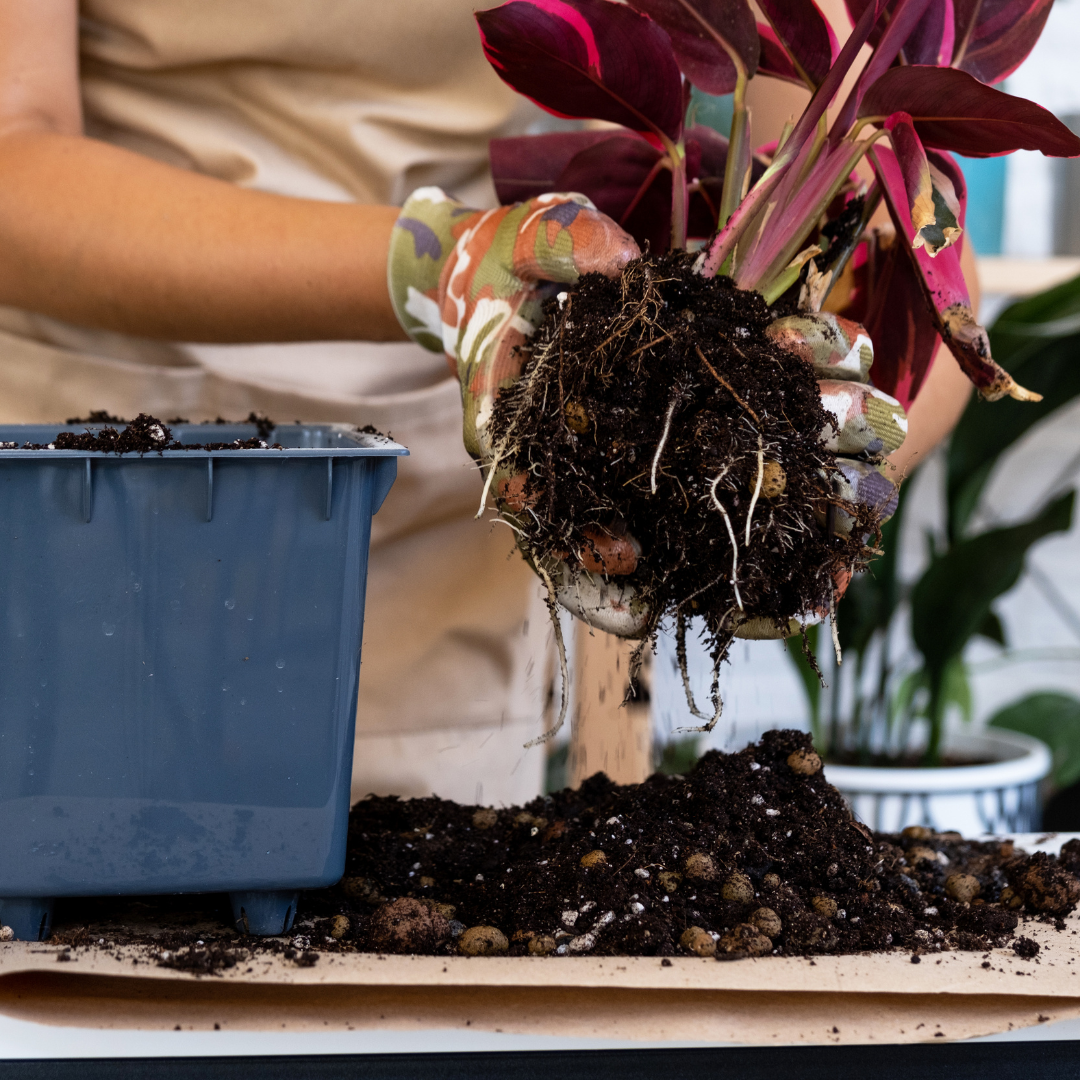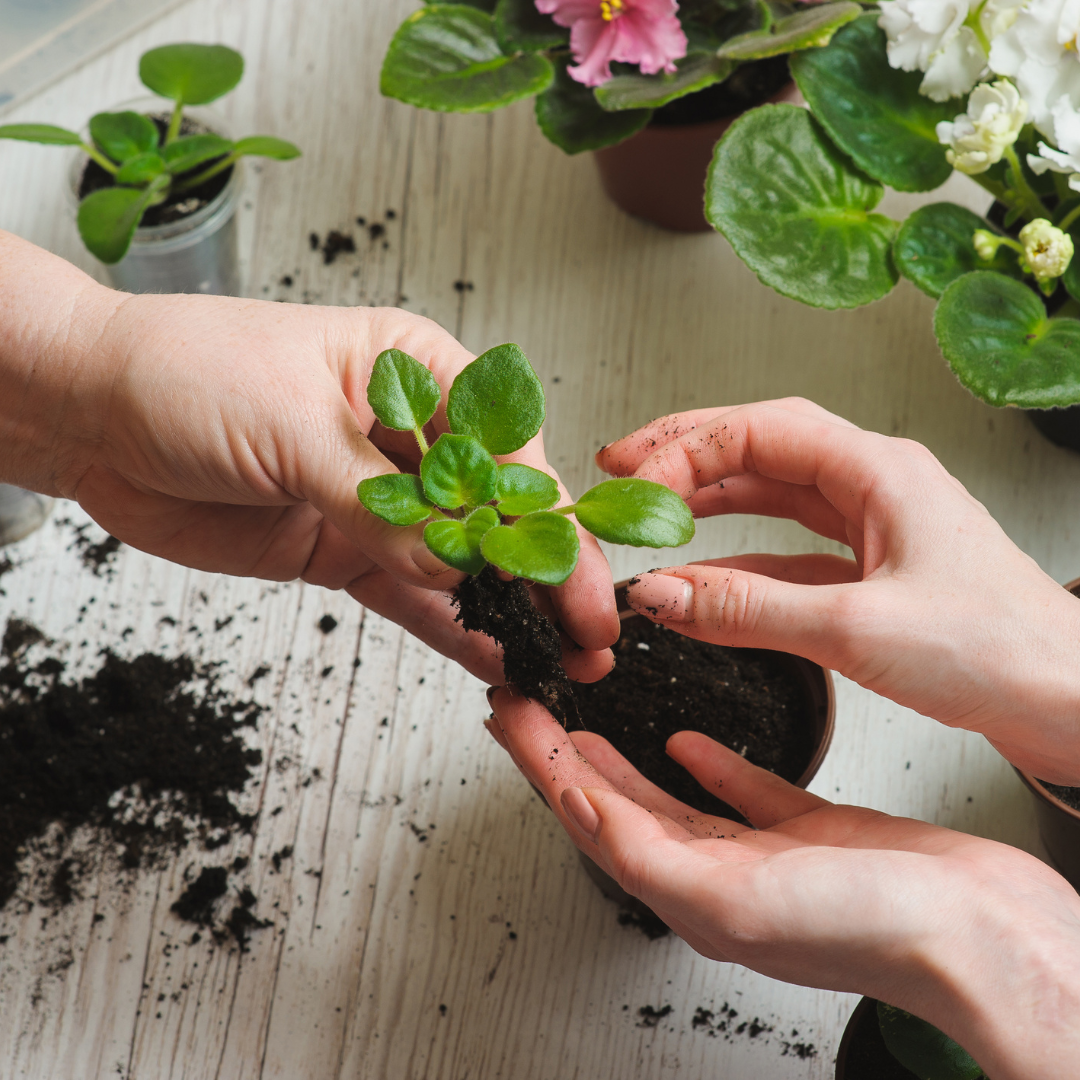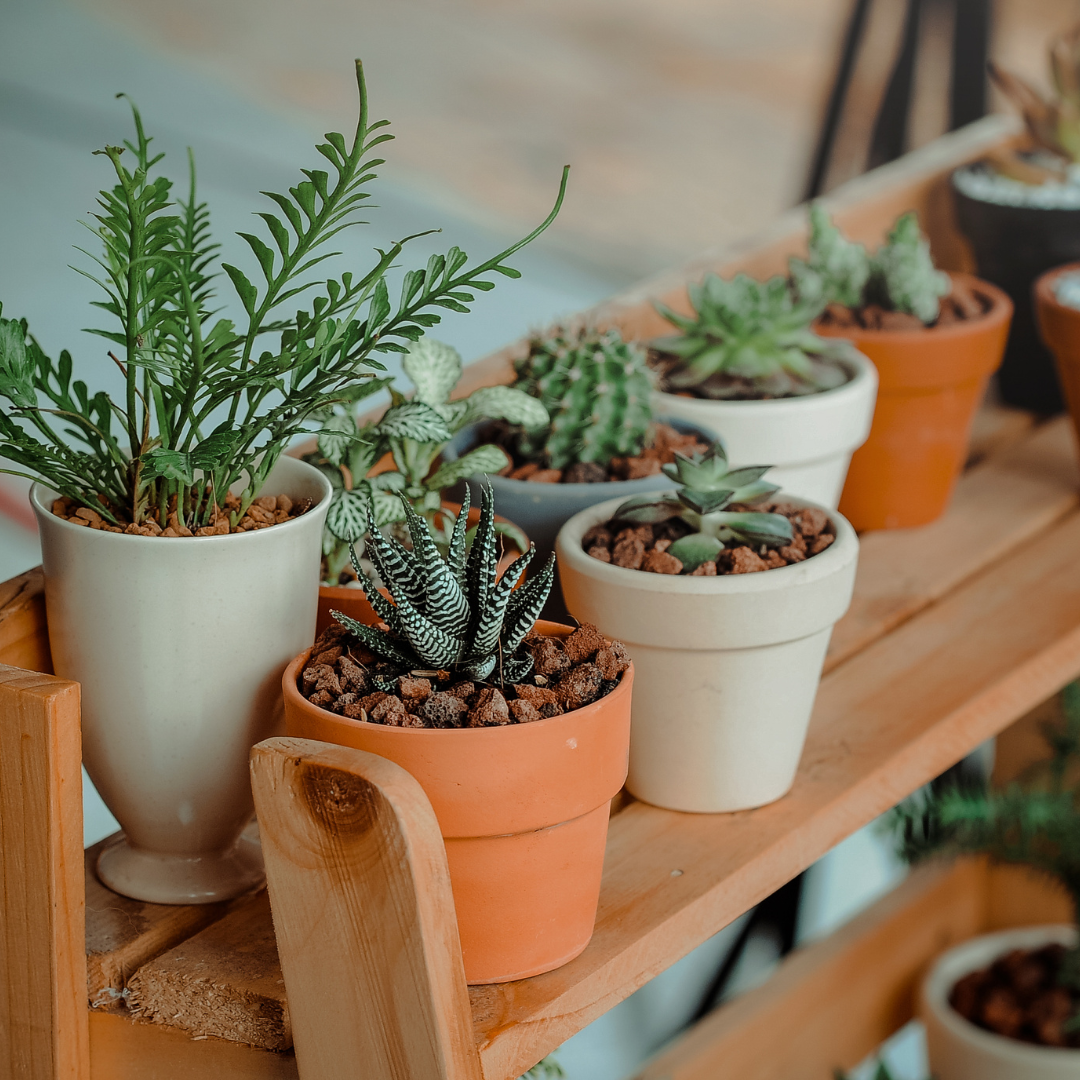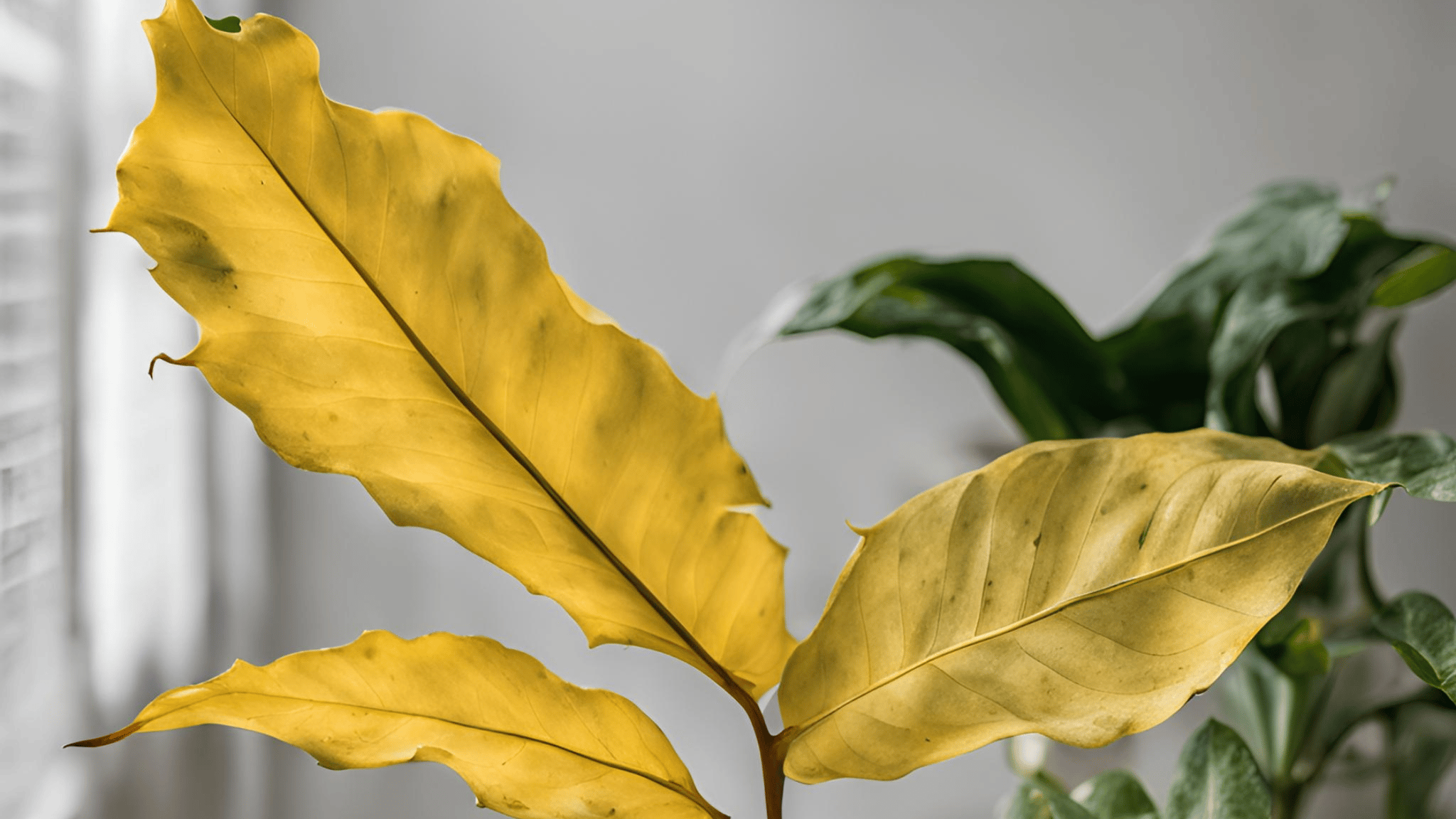Does your favorite indoor plants look something like the one in the picture? The leaves are wilting and the plant is giving off a rotten smell. You’ve searched everywhere to find the reason behind your plant’s decline, but nothing seems to help. Well, worry no more, we have done the research for you from our experts to gather all the right information to save your lucky plant. Dive in to find the reason and treatment.
What causes Root Rot in house Plants?

Understanding Root Rot: Causes and Overview
- Root rot is, as the name suggests, rotting of root due to fungal or bacterial infection or overwatered condition.Fungal infections, particularly from fungi like Phytophthora, Pythium, or Rhizoctonia, are more common. It is a plant disease where the roots of a plant start to decay and turn soft and squishy.
- In simple terms, when you give too much water to a plant, the roots drown causing a deficit of oxygen and nutrient uptake.
- These fungi thrive in overly wet soil,causing the decay of roots.Bacterial root rot is less common and happens in similar poorly drained conditions.
Why Root Rot Can Kill Your Houseplants
- Roots are vital for plant growth as they supply water and mineral nutrients to the whole plant so that they can carry out photosynthesis. Imagine what happens when the source of water is cut-off. The plant cannot photosynthesize and leaves wilt or turn yellow. The plant will struggle to survive with damaged roots, stunting its growth.
- If left untreated, root rot can kill the entire plant by cutting off the lifeline.
How to Identify Root Rot in house plants : signs to look for.

What are the common Symptoms of Root Rot
- The first symptom one starts to notice is the turning yellow of leaves. You might wonder what went wrong. You have provided them with enough water.Even though you are watering, leaves are drooping.
- Your plant looks weaker day by day with stunted growth.
- On examining the roots, you will find it is giving off a foul smell. The roots are no longer white and healthy but dark brown and slimy in touch.
- The soil is wet, soggy and does not drain properly.
- Remember not to conclude your search on root rot by just looking at yellow leaves. Yellowing of leaves happens due to other physiological disorders as well. Nutrient deficiency such as nitrogen, iron, inappropriate lighting, too much temperature variation also causes yellowing.The physiological disorders follow a more systematic changes as it may start from older leaves or new leaves.Yellowing from physiological disorders is often reversible with proper care whereas yellowing from root rot is more severe that needs immediate attention. Check twice before reaching the conclusion.
What are the causes of Root Rot in House Plants

Overwatering and Poor Drainage
- Over watering is one of the primary reasons.Just like us, roots also need oxygen to survive. When you overwater, there is no room for oxygen. The soil becomes saturated.A waterlogged soil cuts off the oxygen supply to plants causing the deficiency. The suffocated root becomes weak and more prone to fungal infection.The wet, damp condition is perfectly suitable for fungal growth.
- And that's why you should always maintain a well-drained soil by adding perlite or organic manure. A well draining soil promotes gradual flow of oxygen, balancing moisture and reduces fungal and bacterial growth.
Common Fungal Infections in Houseplants
Pythium root rot : It is caused by Pythium spp.
Phytophthora root rot :It is caused by Phytophthora spp.
Fusarium root rot : It is caused by Fusarium spp.
- Many pathogens like fungus require moist conditions to grow and reproduce.High humidity helps the spore to germinate in favorable conditions and establish infections.It provides favorable growth conditions for not only spores but also mycelium-a vegetative body of fungi.
Preventing Root Rot in House Plants

How to Prevent House Plant Diseases Related to Root Rot
- Follow proper watering techniques to avoid overwatering.Always check the moisture level of soil. You can easily check it by sticking your finger into the soil for about an inch. If it feels dry at that depth, it’s time to water. If it’s still moist, wait a few more days.
- A well-drained pot and soil is always important to keep check of water level.Always use pots with drainage holes to allow excess water to escape.
- Water the plant in the morning.Just like how a doctor prescribes drinking a glass of water in the morning, plants can also absorb water better during that period.Adjust your watering frequency based on the season, temperature, and humidity. Plants may need less water in cooler months or higher humidity.
- Choosing disease-resistant plant varieties for your home is important to keep disease free.
Treating Root Rot in Houseplants

How to Treat Root Rot in Houseplants
- After inspecting the plant thoroughly for root rot condition, separate it from other plants to prevent contamination.Take it out from the pot and look for rotten dark brown roots. Use a sterilized scissor to cut out the infected root. After removing the diseased part, prepare a soil mixture with coarse materials. Sterilize the pot with vinegar or any fungicide before carefully placing the plant in the pot with new soil mixture.Water lightly after repotting to help the plant settle, but do not overwater. Allow the top inch of soil to dry out before watering again.Place the plant in an appropriate light condition. Watch for new growth and improved leaf color overtime.
Treating Houseplant Pests and Diseases
- There are certain pests who can contribute to the development of root rot in plants. Pests like root aphids, nematodes feed on roots making them more vulnerable to root rot.Wounds created by pests can serve as entry points for fungal and bacterial pathogens that cause root rot.
- Routinely check plants for signs of pests and root health.Use neem oil to control pest populations without harming beneficial microorganisms in the soil.
Conclusion
- Don't let root rot take over your joy giving indoor plants.Ready to bring a warm atmosphere into your home with vibrant indoor plants. Look for resistant varieties of houseplants specially curated for you on our website. Start your plant journey to brighten up your space.

